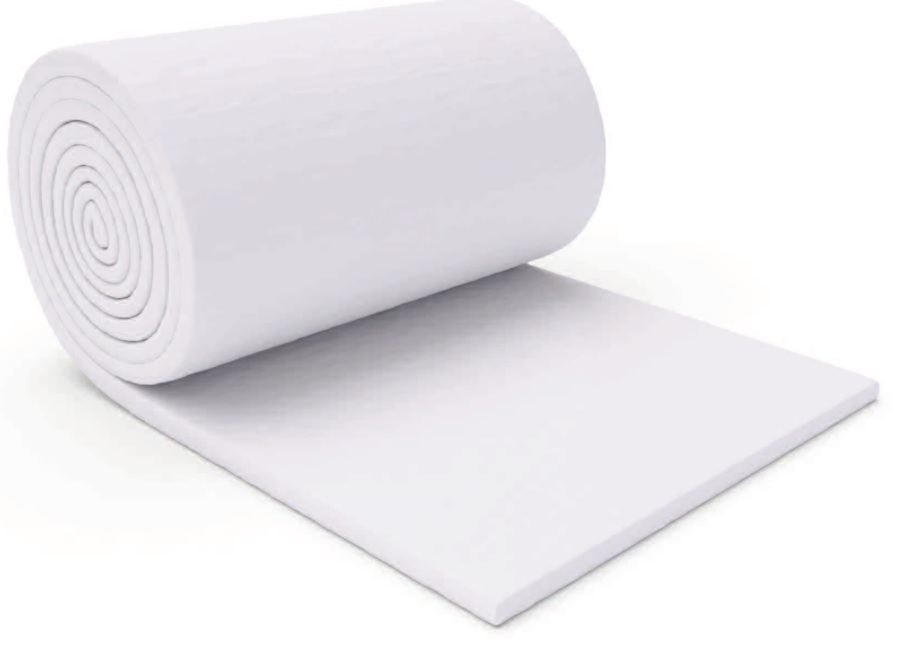
Price: on request
Refractory blanket Superwool® XTRA is made of Superwool® XTRA long fibres. It exhibits outstanding insulating properties at elevated temperatures. Refractory blanket Superwool® XTRA has an excellent thermal stability and retains its original soft fibrous structure up to maximum continuous use temperature. Blanket contains neither binder nor lubricant and does not emit any fume or smell during the first firing. It is flexible, easy to cut and shape and easy to install.
Type:
refractory blanket is made from high temperature insulation wool. Commercial grade Superwool® XTRA Blanket is not suitable for module applications in this form and is not warranted if so used.
Classification temperature:
1450 0С (EN 1094-1) 2600 0F (ASTM C892-17).
Continuous use temperature:
1300 0С - 1325 0С (2372 °F - 2417 °F).
The maximum continuous use temperature depends on the application. For further advice please contact your local Morgan Thermal Ceramics partner.
Melting point:
Superwool® XTRA has a melting point of 1650 0С / 3000 °F.
Shot content and fibre index:
Superwool® XTRA has a low shot content, typically 35 - 37 % and a high fibre index, typically 63 - 65 %.
Benefits:
• excellent thermal insulating performances;
• exonerated from any carcinogenic classification under Nota Q of directive 97/69EC, certificate available on request;
• does not form crystalline silica when exposed to high temperatures;
• excellent resistance to chemicals and pollutants, especially alkali metals;
• high thermal coefficient of expansion to counteract shrinkage in operation;
• excellent thermal stability with time;
• low heat storage;
• immune to thermal shock;
• good resistance to tearing;
• flexible and resilient;
• resistant to water and steam;
• good sound absorption;
• free of binder or lubricant.
Physical properties | Superwool® XTRA Blanket |
Classification temperature 0С (0F) | 1450 (2600) |
Melting point 0С (0F) | 1650 (3000) |
Typical properties | |
Colour | white |
Density kg/m3 (pcf) | 96 (6), 128 (8), 160 (10) |
Tensile strength (EN 1094), kPa | |
96 kg/m3 | > 45 |
128 kg/m3 | > 70 |
160 kg/m3 | > 90 |
Fibre diameter (arithmetic mean) µm | 4,5 - 5 |
High temperature performance | |
Permanent linear shrinkage (EN 1094-1) | < 4 |
Permanent linear shrinkage (ASTM C892-17) | < 4 |
Thermal conductivity W/m.K (ASTM C-201) | 96 kg/m3 128 kg/m3 160 kg/m3 |
200 0С (390 0F) | 0,07 (0,49) 0,07 (0,49) 0,06 (0,42) |
400 0С (750 0F) | 0,11 (0,76) 0,10 (0,69) 0,09 (0,62) |
600 0С (1110 0F) | 0,18 (1,25) 0,16 (1,11) 0,14 (0,97) |
800 0С (1470 0F) | 0,30 (2,08) 0,27 (1,87) 0,23 (1,60) |
1000 0С (1830 0F) | 0,46 (3,19) 0,42 (2,91) 0,34 (2,36) |
1200 0С (2190 0F) | 0,67 (4,65) 0,60 (4,16) 0,49 (3,40) |
Chemical composition, % | |
Al2O3 | 32 - 38 |
SiO2 | 27 - 33 |
K2O | 23 - 28 |
ZrO2 | 5 - 9 |
MgO | 0,5 - 1,5 |
оther oxides | < 0,5 |
Availability and packaging:
Thickness, мм | Density, kg/m3 | Density, kg/m3 | Density, kg/m3 | Length, мм | Width, мм | Carton, м2 |
6 | • | 4 х 5500 | 610 | 13,42 | ||
13 | • | • | • | 14640 | 610 | 8,93 |
19 | • | • | • | 9760 | 610 | 5,95 |
25 | • | • | • | 7320 | 610 | 4,46 |
38 | • | • | 4880 | 610 | 2,98 | |
50 | • | • | 3660 | 610 | 2,23 |

